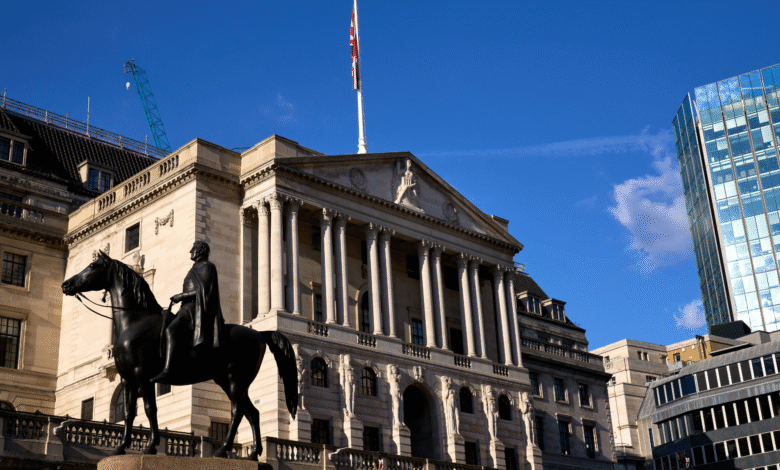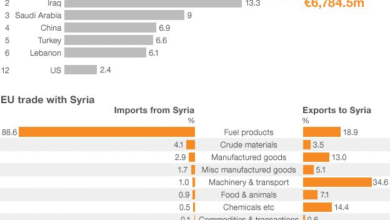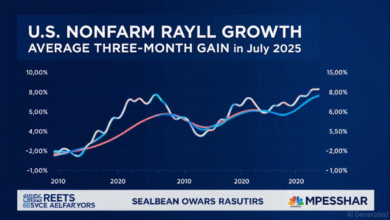Bank of England Interest Rates Cut and Economic Outlook

The recent adjustment in Bank of England interest rates marks a crucial moment in the UK’s economic landscape, as the central bank lowered the Bank Rate from 4.25% to 4%. This decision, driven by the Monetary Policy Committee, comes amid rising concerns over inflation levels, reflected in the recent consumer price index UK figures climbing to 3.6%. In an environment of softening growth and a fluctuating labor market, policymakers are navigating a careful path to stabilize economic conditions. The potential for further adjustments to UK interest rates remains on the table as the Bank of England assesses the impact of its decisions on inflation in the UK and overall economic health. Observers are keen to watch how these developments will influence borrowing costs for families and businesses across the nation.
In the recent monetary policy meeting, the Bank of England made noteworthy changes to the fundamental interest levels that guide the nation’s borrowing costs, a move that has significant implications for households and enterprises alike. The reduction in the primary interest rate reflects a broader strategy by the central banking authority to respond to ongoing economic pressures and fluctuating inflation metrics. As analysts digest these changes, discussions surrounding the persistent inflationary environment and its effects on consumer spending habits are intensifying. Additionally, the deliberations and decisions made by the Monetary Policy Committee are crucial not just for immediate financial implications but also for shaping future economic policy direction. The interplay between labor market trends and monetary adjustments continues to be pivotal as the UK seeks to navigate these challenging financial waters.
Understanding Recent Changes in Bank of England Interest Rates
The Bank of England’s latest decision to cut interest rates from 4.25% to 4% reflects a strategic shift towards a more cautious approach in managing the economy amidst persistent inflationary pressures. The Monetary Policy Committee (MPC) voted closely, showcasing differing opinions among its nine members. This maneuver aims to stimulate economic activity while addressing inflation, which has seen the consumer price index UK rise from 3.4% to 3.6% in just a month, indicating a need for careful navigation of monetary policy.
As the economy grapples with stagnant growth and contracted GDP, the Bank is under pressure to respond effectively to changing financial conditions. This cut marks a significant action as it is the fifth reduction since the last general election in July 2024. With forecasts predicting a trajectory towards lower rates continuing into the following year, the focus remains on achieving a sustainable return to the 2% inflation target, ensuring that further cuts do not compromise financial stability.
Frequently Asked Questions
What recent changes have been made to Bank of England interest rates in 2023?
The Bank of England cut interest rates from 4.25% to 4% in 2023, marking a careful and gradual approach to monetary policy adjustments. The decision was made by the Monetary Policy Committee, which voted 5-4 in favor of reducing the Bank Rate.
How does the Bank Rate affect UK interest rates and the economy?
The Bank Rate set by the Bank of England directly influences UK interest rates across various financial products, including mortgages and loans. A lower Bank Rate generally reduces borrowing costs, stimulating economic growth, although it can also impact inflation.
What role does the Monetary Policy Committee play in determining Bank of England interest rates?
The Monetary Policy Committee (MPC) is responsible for setting the Bank of England interest rates, including the Bank Rate. The MPC meets regularly to assess economic conditions, inflation, and employment data before making decisions about rate changes.
How does inflation in the UK affect Bank of England interest rates?
Inflation in the UK, particularly measured by the consumer price index (CPI), heavily influences Bank of England interest rates. Persistent inflation above the target level can lead the MPC to adjust rates to manage economic stability and achieve the inflation target.
What are the implications of the Bank of England interest rate cuts for consumers?
Recent Bank of England interest rate cuts can result in lower mortgage and loan costs for consumers, making borrowing more affordable. This is viewed as positive news for families and businesses struggling with financial pressures amidst rising inflation.
Why did the Bank of England cut interest rates despite rising inflation?
The Bank of England cut interest rates even with rising inflation because the Monetary Policy Committee seeks to balance economic growth with inflationary pressures. They aim to stimulate the economy while remaining vigilant about long-term inflation trends.
What predictions do economists have regarding future Bank of England interest rate changes?
Economists anticipate a continued trend of gradual Bank of England interest rate cuts into next year, projecting potential reductions until the Bank Rate reaches approximately 3.5% by February 2024, in response to underlying economic conditions.
How does the Bank of England monitor the job market in relation to interest rates?
The Bank of England closely monitors the job market as part of its analysis when determining interest rates. Changes in employment figures and labor market conditions can significantly influence the Monetary Policy Committee’s decisions regarding the Bank Rate.
| Aspect | Details |
|---|---|
| Bank Rate Decision | Interest rates cut from 4.25% to 4% by a vote of 5-4. |
| Contextual Factors | Persistent inflation rising from 3.4% to 3.6%. |
| Economic Indicators | UK GDP contracted by 0.1% in May; employment market showed gradual weakness. |
| Reactions | British pound rose by 0.5% against the US dollar. |
| Future Projections | Economists predict quarterly rate cuts; Barclays projects 3.5% by February. |
| Chancellor’s Remarks | Rachel Reeves welcomed the cut as beneficial for family and business loans. |
Summary
Bank of England interest rates have been adjusted as part of a careful monetary policy strategy aimed at controlling inflation while supporting economic growth. The recent decision to lower the interest rate to 4% reflects ongoing debates within the Monetary Policy Committee, balancing the pressures of rising inflation against factors of stagnation in the economy. Analysts expect this trend to continue with potential further reductions in the coming months, with careful monitoring required to address the underlying inflationary pressures.




